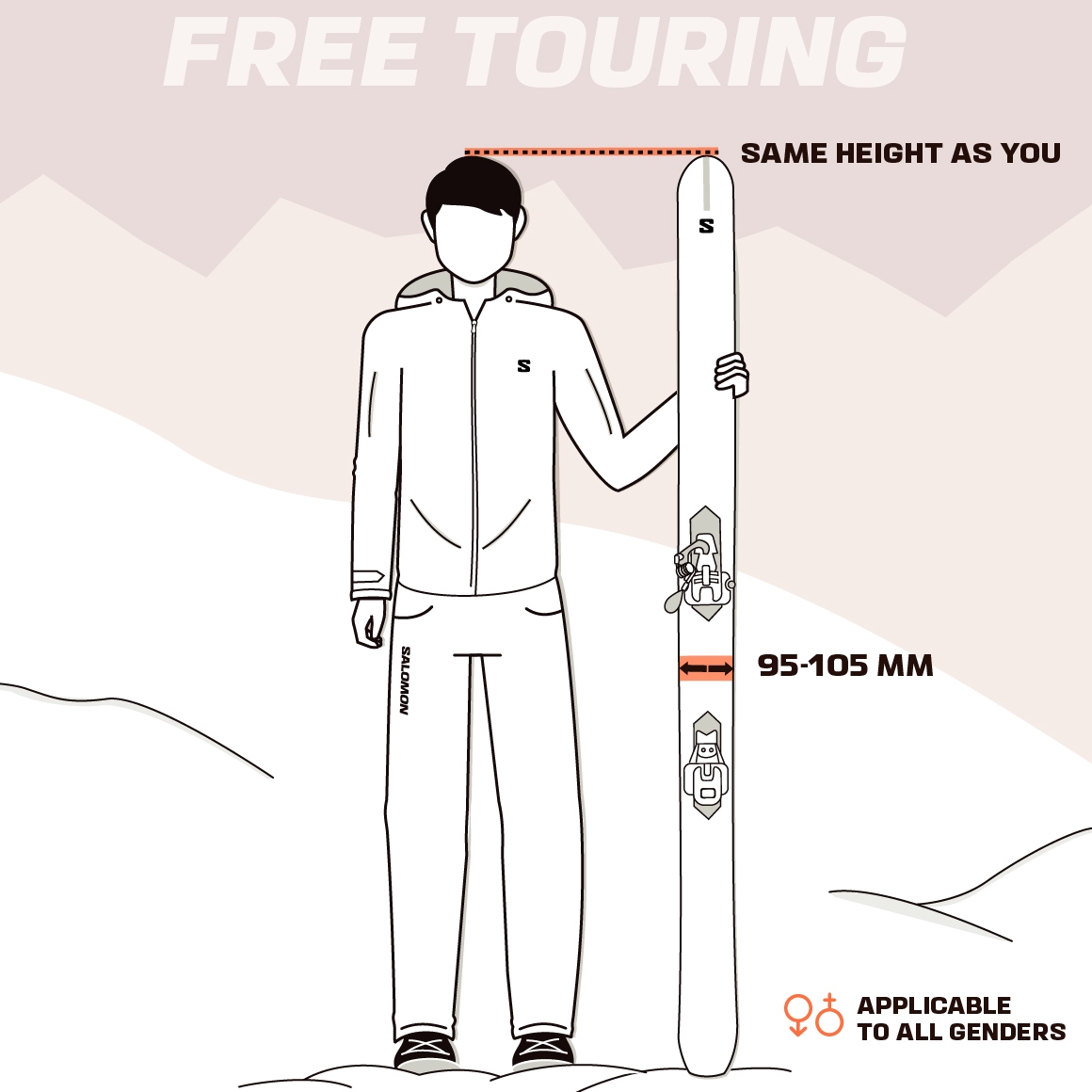In the past, ski touring was reserved for people who lived in mountainous regions, but over the last 20 years it has really taken off. As soon as the snow falls, tourers are often the first ones on their skis. They have equipment that is light for the ascents (on skins) and that performs well in the descents. In this article we will give you our advice on how to choose the right touring skis for you.
What type of skier are you?
If you are ready to give ski touring a go, then you are ready to swap the chairlift for your skins and climb using the strength of your legs. You can approach ski touring in three different ways, with all three having distinctly different equipment.

'Classic' ski touring

If you want to take in your surroundings and climb to the summit at your own pace, have a snack, then ideally ski down on fresh powder, you should look for light equipment that doesn’t sacrifice comfort or downhill performance.
Opt for boots with 1 to 3 buckles, a good range of motion when in walking mode, a lightweight tech binding with a system of pins and versatile touring skis with a waist width of 82-86mm (waist width is measured at the binding in the middle of the ski).

Free touring: skiing for the descent

If you have good descending ability and you have already practiced alpine skiing and freeride within ski resorts, you might need skis that let you put an emphasis on descending and exploring new routes.
You should choose free touring gear: boots with a walk mode that perform well on the descents, reinforced tech bindings or frame bindings and wide skis with a waist width of 95-105mm.

Ski mountaineering and speed touring

Do you practice trail running or another endurance sport in the summertime and do you enjoy the physical effort? When ski touring, do you ascend and descend at speed so you can climb several summits? Are you even considering entering some races?
If the answer is yes, you should choose ski mountaineering equipment which is lightweight: carbon boots, bindings that weigh 3.4 oz (99g), and ultra-light skis with a waist width of 65 – 80mm.
If it's important to you to go fast, speed touring equipment will offer you comfort while being really lightweight.
Choose touring skis suited to your skiing habits
Touring skis are generally lighter than alpine skis. Their sidecut radius is long (around 18m) so that they offer good grip on slanted parts of an ascent and on hard-packed snow in the descents. The majority of models have rocker (read our article on freeride skis for more information) to facilitate the descents.
If you are a classic ski tourer, choose a wide waist width of around 75-90mm. Soft skis with a short sidecut radius of around 15m will be easier to use and less demanding in the descents.
Favor more rigid and straighter skis if you ski in the springtime, in couloirs or on steep terrain.
In any case, you should try to find a pair of skis that weigh less than 6 lbs. 2.7 oz (2,8kg).
For freerando skis, a waist width of 95mm is more versatile in ascents and descents. Rocker is more accentuated at the tip and sometimes at the tail for good flotation. The dimensions of the skis are relatively straight so you can handle slanted, frozen areas, but this make the skis less fun to ski with on groomed runs.
Lastly, for ultra-lightweight equipment, keep the narrowest skis for races. You can find very light and versatile skis with a waist width of 75mm.
What length of touring ski should I choose?
Short touring skis will make you feel lighter, help you perform kick turns when skinning uphill and they are also overall easier to maneuver. (Generally, you ski slower when touring and it's often useful to be able to weave in and out of trees).
For the length of skis ideal for versatile ski touring, deduct between 5 and 10 cm from your height.
For free touring, you can buy skis that are the same height as you to encourage stability and flotation when descending.
For speed touring, deducting 10cm (or more) from your height is quite common for races (the shortest skis allowed are 160cm for men and 150cm for women).
What type of bindings should you choose?
Ski touring bindings have a free heel when in walk mode. To find out more read our article about the choice of bindings.
There are two types of ski touring bindings on the market:
- Tech bindings: these are the lightest and most popular type of bindings. Make sure you choose boots that are compatible.
- Frame (or AT) bindings: the whole binding pivots around a plate that is fixed to the ski. These bindings are heavy but provide more security in descents as they release easily. Therefore, they are beneficial when free touring.
In 2018, Salomon released the Shift, the first binding to combine the efficiency of a tech binding with the level of performance of a freeride binding when descending.
Lastly, don't forget that whatever your approach, ski touring is enjoyed in isolated, mountain terrain, far from the safety of the resorts. Never go out on your own and always take your transceiver, shovel and probe. Don't forget to take courses and train regularly!
Check out our Stories and guides for more articles about skiing.














